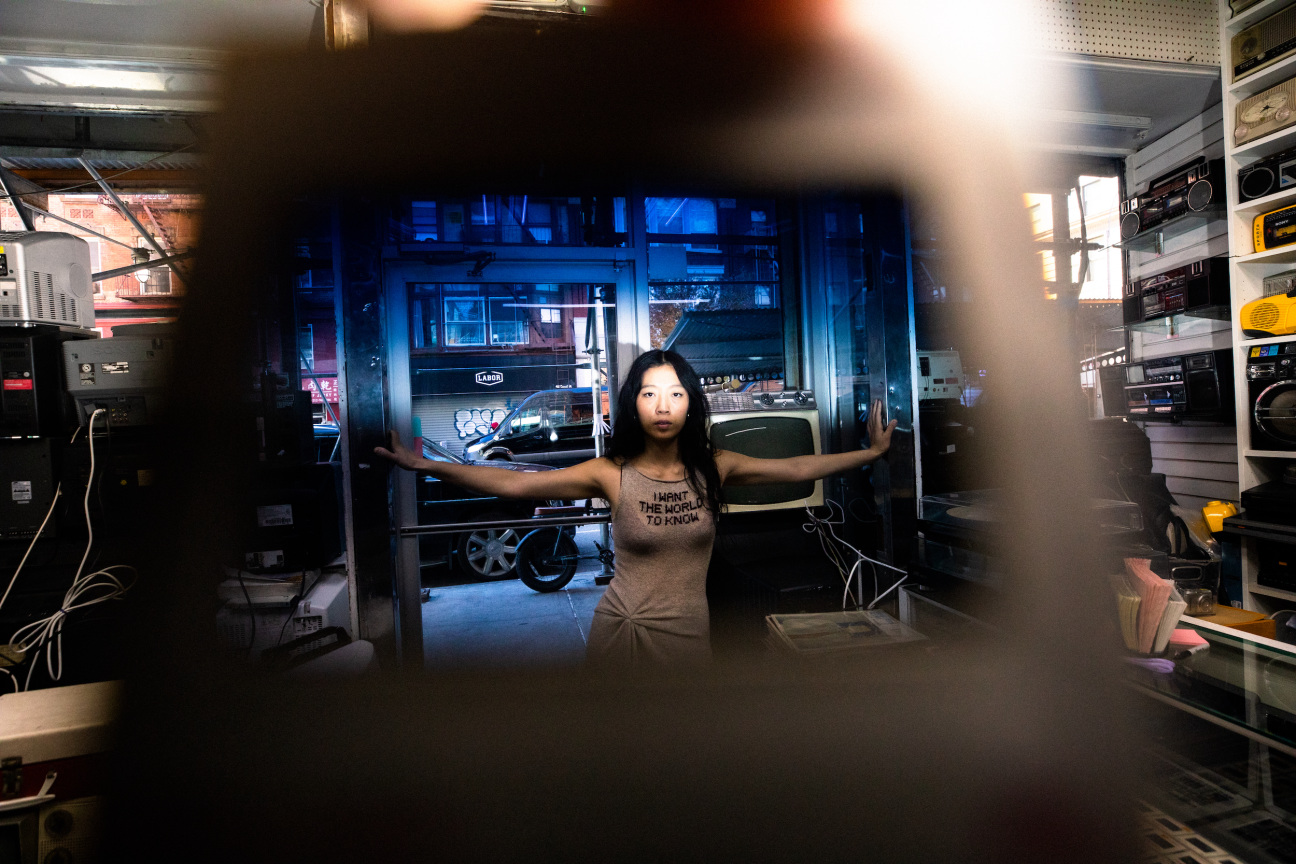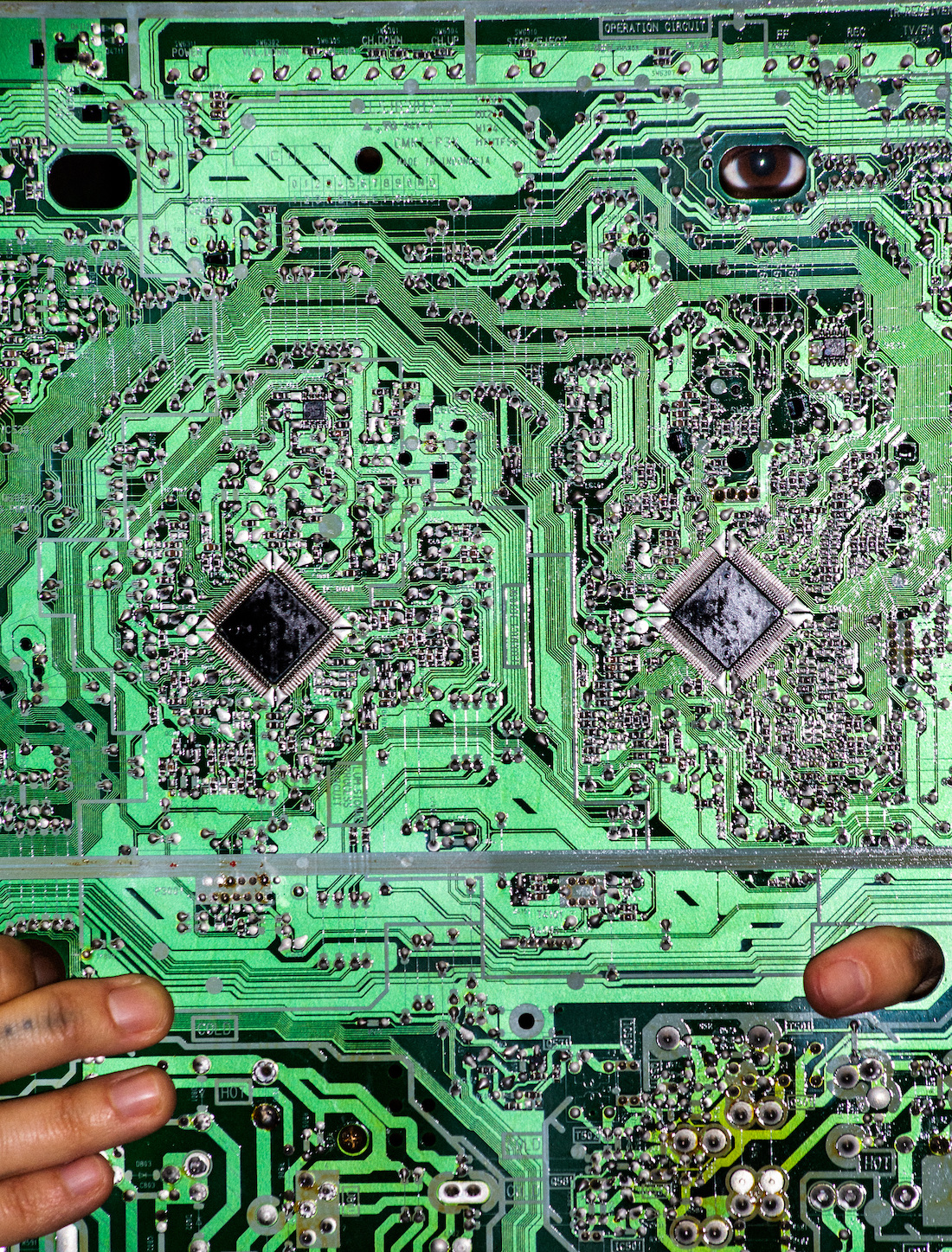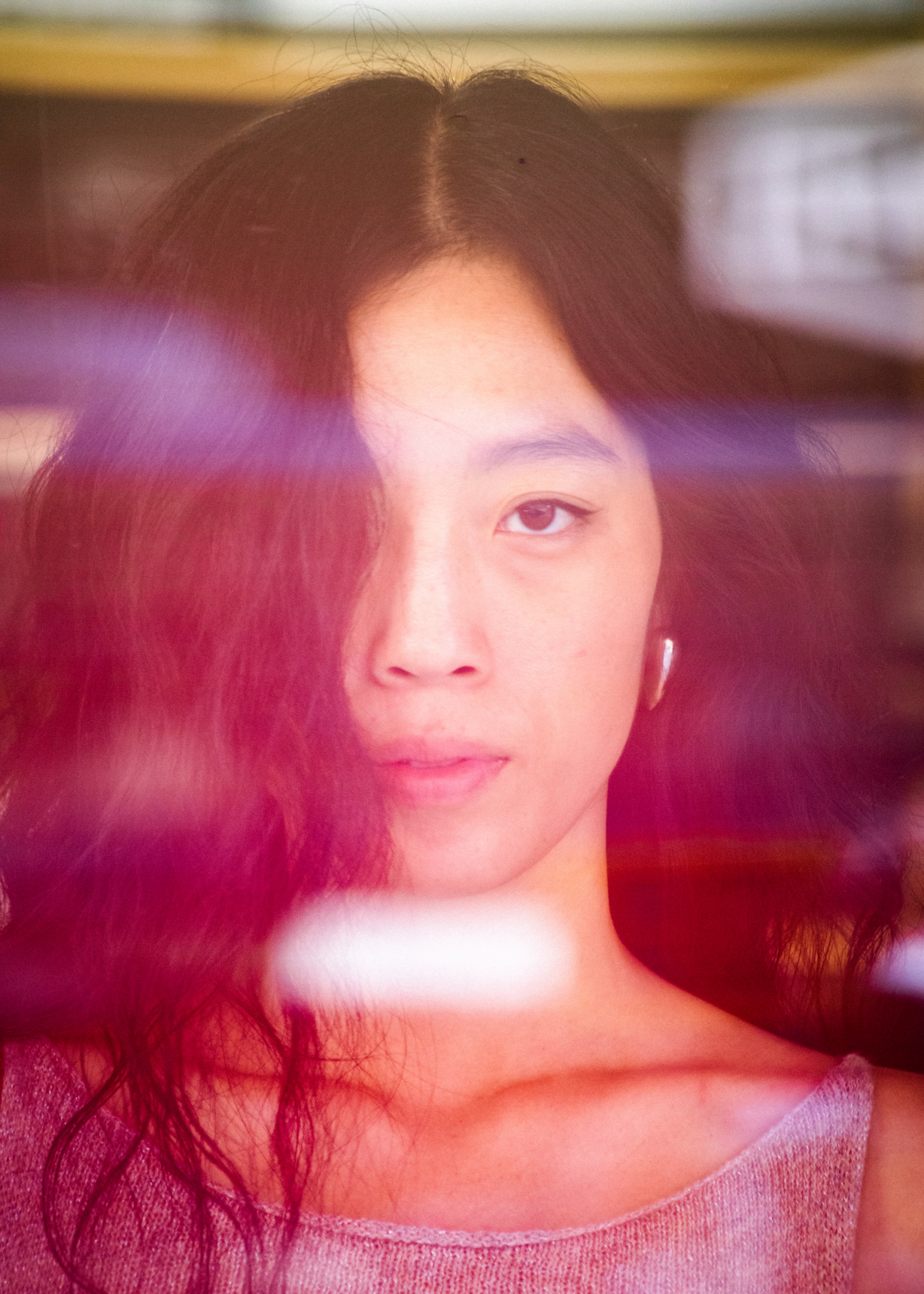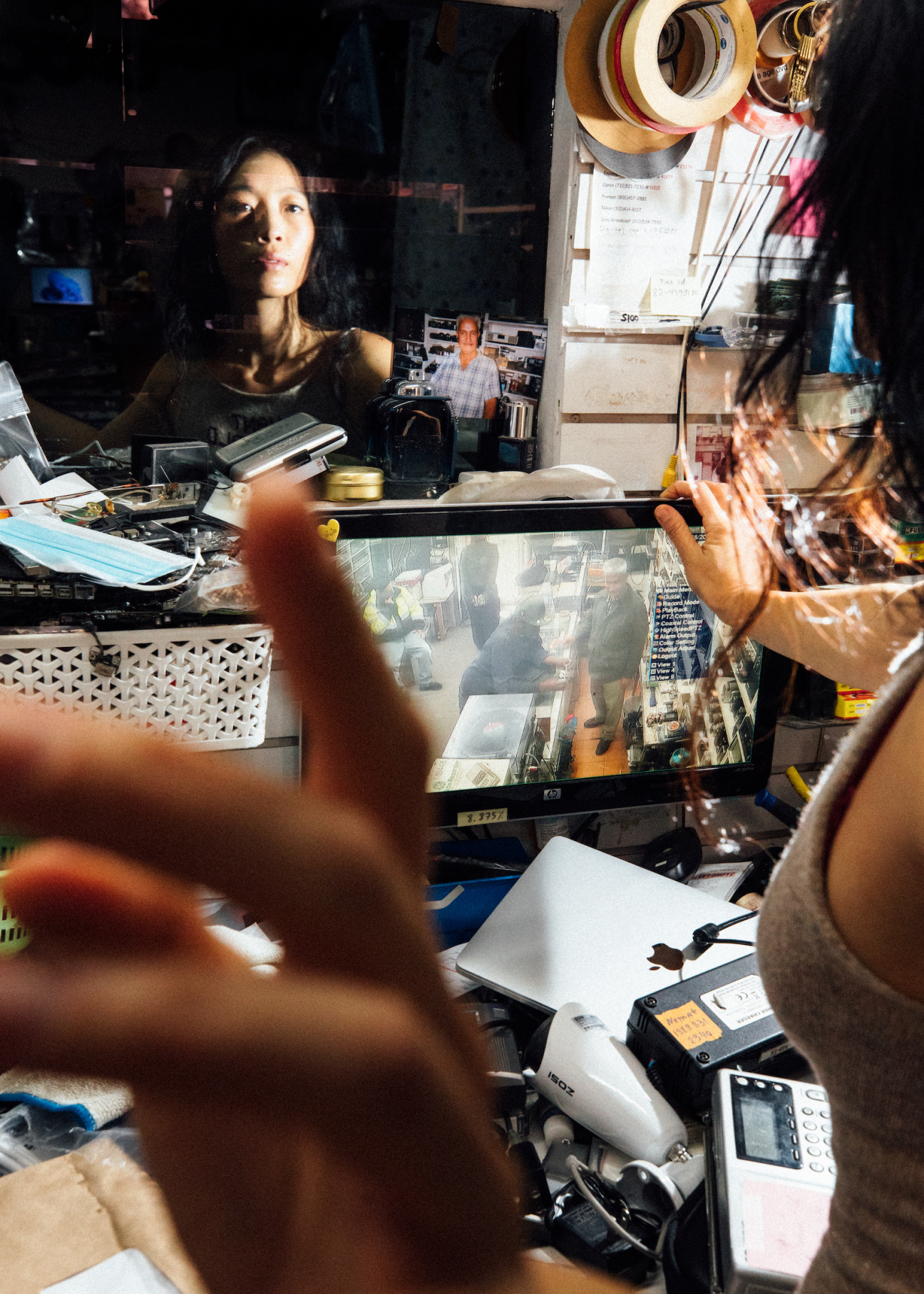
The Internet is a web of interconnected ideas created by a collective of humans and their thoughts. Over the years, Mindy Seu and I have had deep conversations about the Internet and associative thinking, together imagining other Internets. Seu’s latest book, Cyberfeminism Index, is a pseudo-encyclopedia of online activism and net art. As a mutating world of entangled branches, the Internet has emancipatory potential toward openness, learning, and togetherness. Permeable and entangled, we discourse the internet's embodied reality, and how it might be if we imagine it differently.
Yasaman Sheri: When we encounter something new that interests us, we often make literal or mental lists. If we think of lists as connected nodes held together with connective threads, we begin to see lists of many forms in many places. You often speak of spreadsheets. Why are they important to you?
Mindy Seu: When I was younger, I was drawn to different forms of organization that were more default, like color coordination or alphabetizing. As I’ve gotten older, and especially with our community, that organization has become more sophisticated, focusing on associative linking between themes or the development of new taxonomies. There’s also been the rise of list-making and sequencing as a curatorial act. The Cyberfeminism Index is definitely an example of this—collecting as a form of authorship.
Sheri: Why did you decide to call it the Cyberfeminism Index?
Seu: My publishers initially suggested the Cyberfeminism Archive, but I wanted to use Index because it points to the cyclical process that we employed. An archive is an organization that has a system of generational preservation in place. It brings things together into a silo, pointing inward, whereas an index is always pointing outward.
There are barely any works in their entirety in the Cyberfeminism Index; it’s primarily made up of excerpts or stills with external links that push outward to the original artifact, like the original net artwork, the original PDF, etc. We’ve then tried to fortify those links using web archiving tools or duplication. During the Cyberfeminism Index book tour, I did a lecture performance in which I “surfed” the hypertext of the book, using my index finger to trace the reading. An index led by an “index” finger, also known as the pointer finger, really embodies this idea of pointing outward.

Sheri: We can think of metaphors in the history of computing in which the embodied, physical, and even the living became notations carried over to computing interfaces. For example, the software “bug” now refers to errors in the code, but the term originally came from computer scientist Grace Hopper finding a literal bug: a moth trapped in the computer. The desktop metaphor of the Graphical User Interface (GUI) can be seen as a quest to grasp the physical morphology of an office space and visualize it on the screen. Can you speak to the physical-to-digital metaphors of online space?
Seu: Historically, there have always been these natures of metaphor within the syntax of computing. The “bug” that you mentioned is a great example, also the “tree” in computer programming, the “cloud,” the “virus.” We have fiber optic cables running along the ocean floor, server farms require huge amounts of energy, even sending an email has a carbon footprint.
All of this describes the internet as very material even though we think it is quite ephemeral. If we extend this further, we can start to think of our bodies as a form of technology encoded with different systems of socialization. We can deprogram or run as intended. But who did this programming to begin with? And do we actually want to follow suit, or is it worth examining to create a different method of engaging with the world?
Sheri: There is a recurring analogy between infrastructure of the Internet and interconnected web of mycelial networks. The Internet is also made up of networks of human-created interactions that can be comparable to the massively parallel microworlds of life. We could say that the Internet is life-like…
Seu: This is where slime theory and wetware comes in. It moves away from this idea of the Internet or digital technologies being cold and sterile, but quite messy and gooey. Artists like Claire L. Evans talk about these fungi as potential landscapes for computing, or Jenna Sutela writes about the connection between slime molds and Silicon Valley.

Sheri: Nature is simultaneously systematic and messy. It’s also holistic, encompassing scales that we humans are not able to sense or perceive but are very much part of. It brings back the idea that we’re not all that separate; there is intertwined connectivity between one another. Within sciences and technology, there’s a desire for human mastery and standardization. However, as we know, scalability has a relationship with control that can be unruly, wild, and even disobedient.
Seu: Within those fields, though, when we think of the development of new tools, it’s often prompted by trying to understand some aspect of the human body. When Marvin Minsky was pushing forward the development of A.I. in the '60s, he was trying to understand the human brain. When Morton Heilig created the first head-mounted display—a precursor of the VR headset—he was trying to understand how the human eye worked.
Messiness also points to this idea of gathering. Instead of moving fast and breaking things, scholars like Anna Tsing encouraged looking around rather than looking ahead. Noticing what would bloom naturally through emergence. This gathering also then points back to curatorial practice because it’s about finding resources that are specifically intended for your kin, your community. Then, designers like you and me question what container might hold this material gathering; a tool, a website, a book, an installation. This might then be activated through a social gathering. It offers a different way to consider how we might engage with vast information overload.
Sheri: This concept of gathering: There’s a historical undertone of the hunter-gatherer. We can consider the ancestral nature of foraging juxtaposed against agricultural farming. Can you touch upon what gathering means today?
Seu: I write about this briefly in the introduction of the Cyberfeminism Index. It also served as an inspiration for my Yale MFA course called “On Gathering.” It points to Ursula K. Le Guin’s essay “The Carrier Bag Theory of Fiction,” in which she posits that the first tool is not the spear, a tool of domination, but actually the basket, a tool of gathering.
This expands our connotation of technology towards the analog, our ancestral technologies, and it reframes our understanding of the protagonist away from an individual hero that we often see in histories towards the collective. If we map this in contemporary times, it might look like resource compilations, PDF libraries, different forms of pro-piracy, BDS, activist movements—all of these can be acts of material and social gathering for a specific community that the gatherer is part of.

Sheri: There's something so poetic about translation; a beautiful dance of metaphors moving from physical, to digital, then back to physical, and back to digital.
Seu: Yes, those media are very complementary.
Sheri: Complementary, and oscillating. This returns us to ideas of circularity. In a time of increased siloing, how can we think about collective creation and the commons?
Seu: You and I have adopted this role of facilitator. We create platforms that have clear parameters that are porous enough to allow for some modification or surprise. Then invitees or passersby can contribute resources. So not only is it open access, but it’s also crowdsourced. For the Cyberfeminism Index website, my collaborator Angeline Meitzler and I also felt it was important to make the database open source. It’s an easy way for people to clone the online version as a basis for their own platforms. For me, this trifecta—open source, crowdsourced, open access—really hits the sweet spot for how to make an online resource meaningful to a community, but also adapted by other communities, thereby creating these pathways between them.
Sheri: It’s this iteration and the repurposing of resources, like nutrients and chemical exchanges, that makes such interactions feel interconnected and collective. Sharing resources in a vulnerable way may seem messy, but it’s actually quite intimate, adaptive and growing.
Seu: Interconnected, decentralized, cyclical, and messy—that seems like a good prompt for future gatherings.










 in your life?
in your life?

